�
Solving Nonlinear
Equations
Newton's M thod
th
fundamentals of Algorithms
Editor-in-Chief: Nicholas J. Higham, University of Manchester
The SIAM series on Fundamentals of Algorithms publishes monographs on state-of-the-art
numerical methods to provide the reader with sufficient knowledge to choose the appropriate
method for a given application and to aid the reader in understanding the limitations of each
method. The monographs focus on numerical methods and algorithms to solve specific classes
of problems and are written for researchers, practitioners, and students.
The goal of the series is to produce a collection of short books written by experts on numerical
methods that include an explanation of each method and a summary of theoretical background.
What distinguishes a book in this series is its emphasis on explaining how to best choose a
method, algorithm, or software program to solve a specific type of problem and its descriptions
of when a given algorithm or method succeeds or fails.
Kelley, C. T. Solving Nonlinear Equations with Newton's Method
�
C T. Kelleg
North Carolina State University
Raleigh, North Carolina
Solving Nonlinear
Equations with
Newton's Method
siamm
Society for Industrial and Applied Mathematics
Philadelphia
�
Copyright © 2003 by the Society for Industrial and Applied Mathematics.
10 9 8 7 6 5 4 3 21
All rights reserved. Printed in the United States of America. No part of this book may
be reproduced, stored, or transmitted in any manner without the written permission of
the publisher. For information, write to the Society for Industrial and Applied
Mathematics, 3600 University City Science Center, Philadelphia, PA 19104-2688.
Library of Congress Cataloging-in-Publication Data
Kelley, C. T.
Solving nonlinear equations with Newton's method / C.T. Kelley.
p. cm. — (Fundamentals of algorithms)
Includes bibliographical references and index.
ISBN 0-89871-546-6 (pbk.)
1. Newton-Raphson method. 2. Iterative methods (Mathematics) 3. Nonlinear theories.
I. Title. II. Series.
QA297.8.K455 2003
511'.4— dc21
2003050663
Apple and Macintosh are trademarks of Apple Computer, Inc., registered in the U.S.
and other countries.
VAIO is a registered trademark of Sony Corporation.
No warranties, express or implied, are made by the publisher, author, and their
employers that the programs contained in this volume are free of error. They should
not be relied on as the sole basis to solve a problem whose incorrect solution could
result in injury to person or property. If the programs are employed in such a manner,
it is at the user's own risk and the publisher, author, and their employers disclaim
all liability for such misuse.
is a registered trademark.
�
To my students
�
This page intentionally left blank
�
Contents
Preface
How to Get the Software
1
Introduction
1.1 What Is the Problem?
Notation
1.2
1.3
1.4
1.5
1.6
1.7
1.8
Local Convergence Theory
1.1.1
Newton's Method
1.2.1
Approximating the Jacobian
Inexact Newton Methods
Termination of the Iteration
Global Convergence and the Armijo Rule
A Basic Algorithm
1.7.1
Things to Consider
1.8.1
1.8.2
1.8.3
1.8.4
Human Time and Public Domain Codes
The Initial Iterate
Computing the Newton Step
Choosing a Solver
Warning!
1.9 What Can Go Wrong?
. .
Nonsmooth Functions
Failure to Converge
Failure of the Line Search
Slow Convergence
Multiple Solutions
Storage Problems
1.9.1
1.9.2
1.9.3
1.9.4
1.9.5
1.9.6
Three Codes for Scalar Equations
1.10.1
1.10.2
1.10.3
1.10.4
Common Features
newtsol.m
chordsol.m
secant.m
1.10
1.11 Projects
vii
xi
xiii
1
1
1
2
3
5
7
9
11
12
14
15
15
15
16
16
17
17
18
19
19
20
20
20
21
21
22
23
24
�
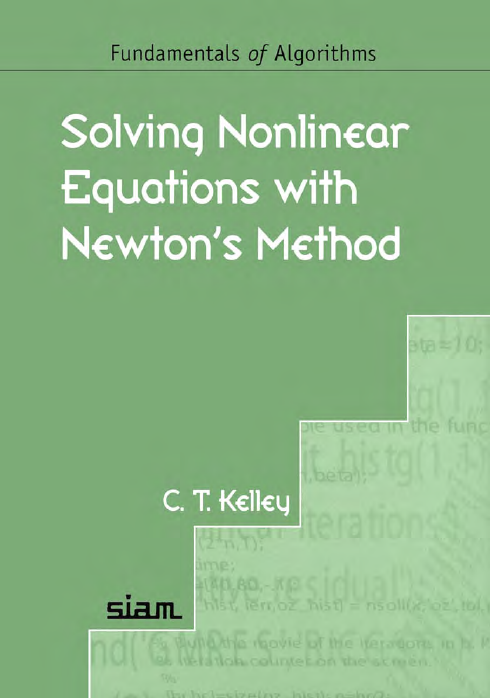
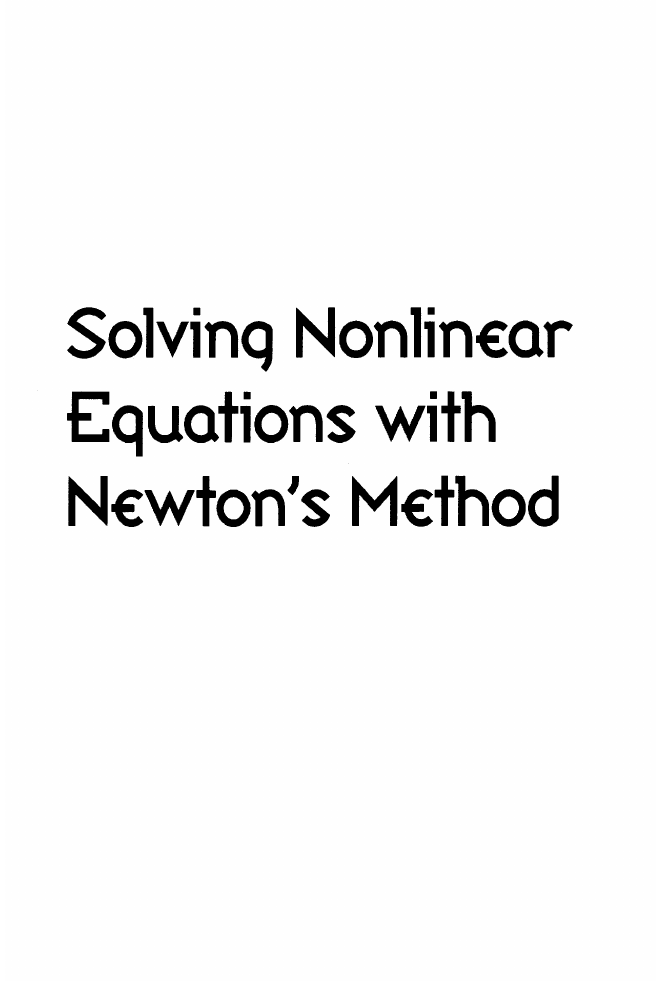
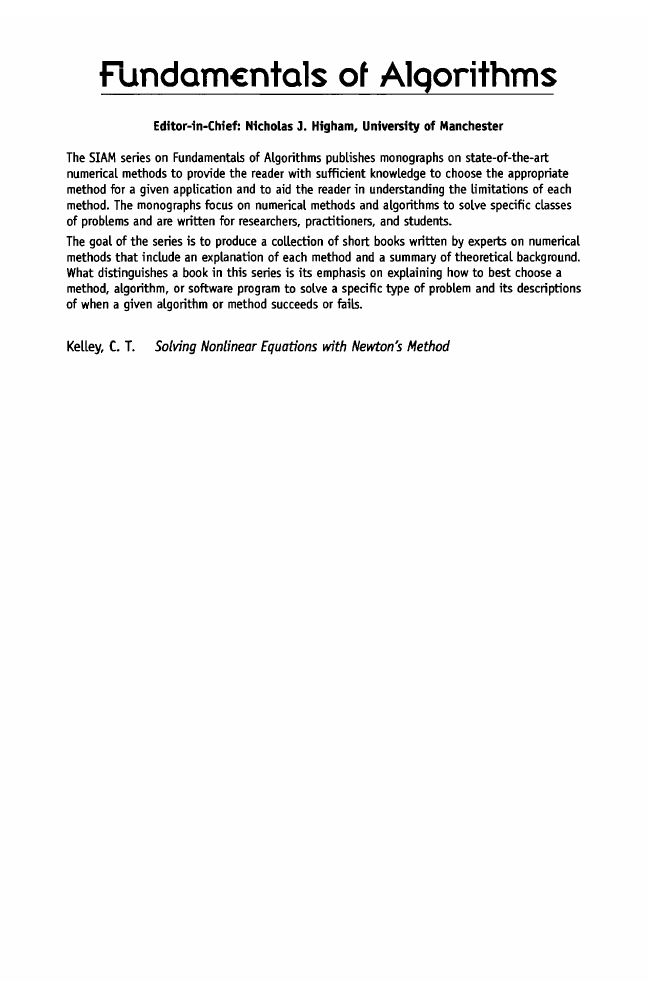

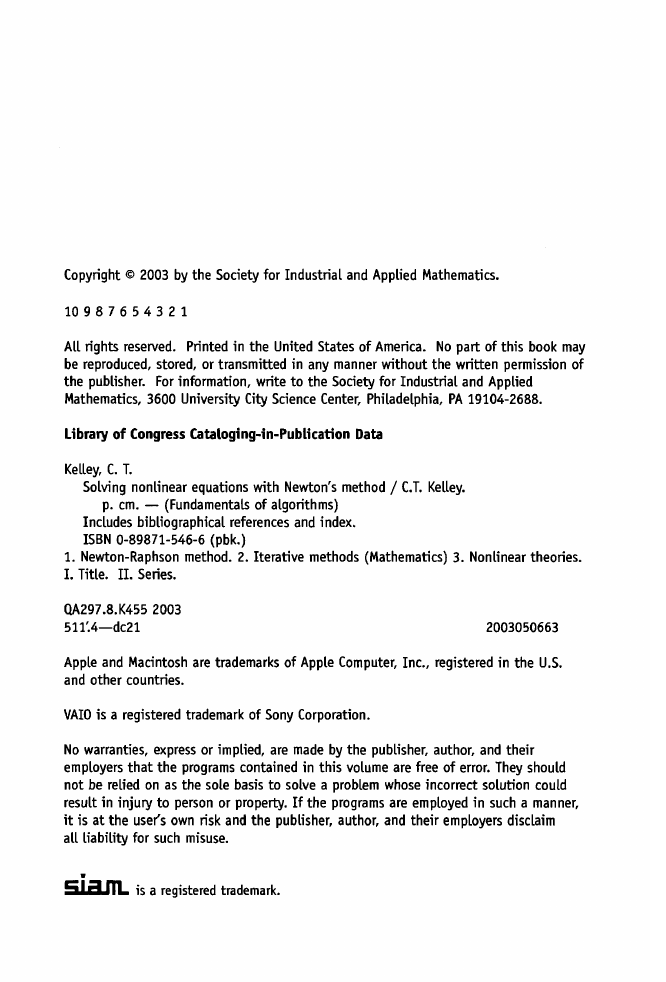


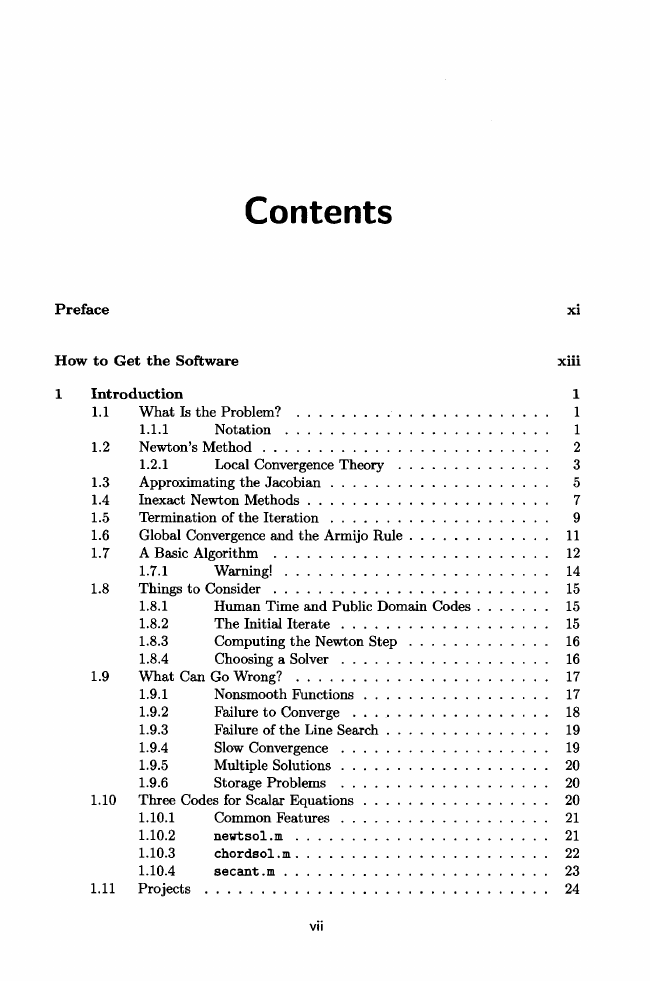








 2023年江西萍乡中考道德与法治真题及答案.doc
2023年江西萍乡中考道德与法治真题及答案.doc 2012年重庆南川中考生物真题及答案.doc
2012年重庆南川中考生物真题及答案.doc 2013年江西师范大学地理学综合及文艺理论基础考研真题.doc
2013年江西师范大学地理学综合及文艺理论基础考研真题.doc 2020年四川甘孜小升初语文真题及答案I卷.doc
2020年四川甘孜小升初语文真题及答案I卷.doc 2020年注册岩土工程师专业基础考试真题及答案.doc
2020年注册岩土工程师专业基础考试真题及答案.doc 2023-2024学年福建省厦门市九年级上学期数学月考试题及答案.doc
2023-2024学年福建省厦门市九年级上学期数学月考试题及答案.doc 2021-2022学年辽宁省沈阳市大东区九年级上学期语文期末试题及答案.doc
2021-2022学年辽宁省沈阳市大东区九年级上学期语文期末试题及答案.doc 2022-2023学年北京东城区初三第一学期物理期末试卷及答案.doc
2022-2023学年北京东城区初三第一学期物理期末试卷及答案.doc 2018上半年江西教师资格初中地理学科知识与教学能力真题及答案.doc
2018上半年江西教师资格初中地理学科知识与教学能力真题及答案.doc 2012年河北国家公务员申论考试真题及答案-省级.doc
2012年河北国家公务员申论考试真题及答案-省级.doc 2020-2021学年江苏省扬州市江都区邵樊片九年级上学期数学第一次质量检测试题及答案.doc
2020-2021学年江苏省扬州市江都区邵樊片九年级上学期数学第一次质量检测试题及答案.doc 2022下半年黑龙江教师资格证中学综合素质真题及答案.doc
2022下半年黑龙江教师资格证中学综合素质真题及答案.doc